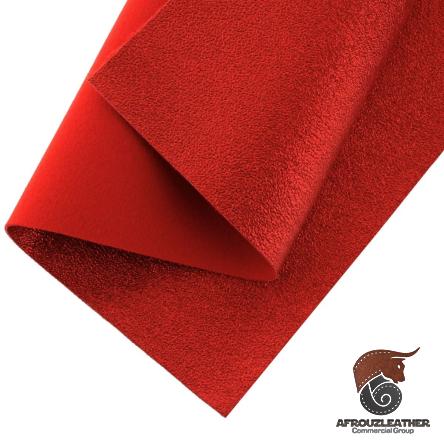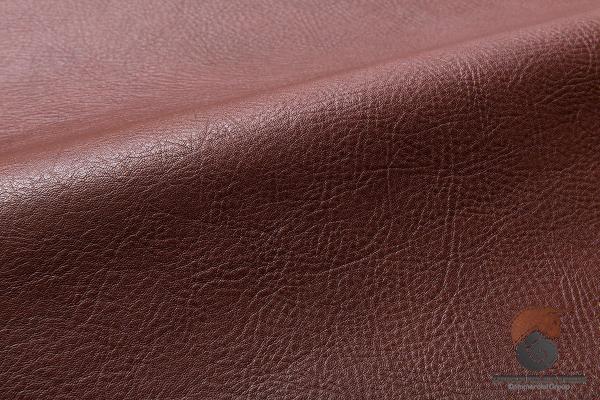Leather has been used for centuries in the creation of various products due to its durability, luxurious feel, and natural texture. Calfskin and lambskin are two of the most popular types of leather widely used in the fashion and accessories industry. While they share some similarities, such as their softness and versatility, there are distinct differences between the two. This article aims to explore the unique characteristics, advantages, and disadvantages of calfskin and lambskin leather, enabling readers to make informed choices when considering these materials. Section 1: Calfskin Leather Calfskin leather is derived from the hides of young calves, typically no more than six months old. It is highly regarded for its high quality, strength, and durability. Here are some key points to consider about calfskin leather: 1. Strength and Durability: Calfskin leather is known for its exceptional durability, making it less prone to tearing or stretching compared to other leathers.
leather
 The tight grain structure of the leather contributes to its strength, making it ideal for products that require longevity. 2. Thickness: Calfskin leather tends to have a thicker and more substantial feel compared to other types of leather. This thickness provides added sturdiness and structure, making it suitable for products that require resilience and support. 3. Texture: Calfskin leather has a distinctive texture characterized by small, even grains. The grains are relatively uniform in size, resulting in a smooth and refined appearance. This fine texture lends an elegant and sophisticated touch to products made from calfskin leather. 4. Water and Stain Resistance: Calfskin leather exhibits natural water and stain resistance, making it an excellent choice for accessories and outerwear. This property enhances the leather’s ability to endure harsh conditions and maintain its original appearance over time. Section 2: Lambskin Leather Lambskin leather, as the name suggests, is obtained from the hides of young lambs.
The tight grain structure of the leather contributes to its strength, making it ideal for products that require longevity. 2. Thickness: Calfskin leather tends to have a thicker and more substantial feel compared to other types of leather. This thickness provides added sturdiness and structure, making it suitable for products that require resilience and support. 3. Texture: Calfskin leather has a distinctive texture characterized by small, even grains. The grains are relatively uniform in size, resulting in a smooth and refined appearance. This fine texture lends an elegant and sophisticated touch to products made from calfskin leather. 4. Water and Stain Resistance: Calfskin leather exhibits natural water and stain resistance, making it an excellent choice for accessories and outerwear. This property enhances the leather’s ability to endure harsh conditions and maintain its original appearance over time. Section 2: Lambskin Leather Lambskin leather, as the name suggests, is obtained from the hides of young lambs.
Specifications of leather
 It is renowned for its softness, suppleness, and luxurious feel. Here are some essential characteristics of lambskin leather: 1. Softness and Suppleness: Lambskin leather is prized for its incredibly soft and supple nature, making it a desirable option for garments and accessories requiring a delicate touch. Lambskin’s unparalleled softness provides a luxurious sensation against the skin. 2. Lightweight and Thin: Compared to calfskin leather, lambskin is generally lighter in weight and thinner. The thinness gives lambskin a certain level of delicacy, making it ideal for creating lightweight clothing items and accessories. 3. Fine Texture: Lambskin leather has a fine and velvety texture with smaller, discreet grains. The grains are often irregular in size, giving the leather a unique character and a more natural appearance when compared to the uniformity of calfskin leather. 4. Breathability: Lambskin leather is highly breathable, allowing air circulation and reducing moisture build-up. This breathable characteristic enhances comfort, particularly when used in garments and accessories. Section 3: Advantages and Disadvantages 1. Calfskin Leather Advantages: – Excellent durability and strength compared to lambskin leather. – Natural water and stain resistance. – Provides structure and support due to its thickness. – Higher resistance to wear and tear.
It is renowned for its softness, suppleness, and luxurious feel. Here are some essential characteristics of lambskin leather: 1. Softness and Suppleness: Lambskin leather is prized for its incredibly soft and supple nature, making it a desirable option for garments and accessories requiring a delicate touch. Lambskin’s unparalleled softness provides a luxurious sensation against the skin. 2. Lightweight and Thin: Compared to calfskin leather, lambskin is generally lighter in weight and thinner. The thinness gives lambskin a certain level of delicacy, making it ideal for creating lightweight clothing items and accessories. 3. Fine Texture: Lambskin leather has a fine and velvety texture with smaller, discreet grains. The grains are often irregular in size, giving the leather a unique character and a more natural appearance when compared to the uniformity of calfskin leather. 4. Breathability: Lambskin leather is highly breathable, allowing air circulation and reducing moisture build-up. This breathable characteristic enhances comfort, particularly when used in garments and accessories. Section 3: Advantages and Disadvantages 1. Calfskin Leather Advantages: – Excellent durability and strength compared to lambskin leather. – Natural water and stain resistance. – Provides structure and support due to its thickness. – Higher resistance to wear and tear.
buy leather
 – Offers a polished and refined appearance. 2. Calfskin Leather Disadvantages: – Can be firmer and less supple compared to lambskin leather, potentially requiring a break-in period. – Heavier and thicker, thus may not be suitable for lightweight applications or clothing. – Slightly higher cost compared to lambskin due to its durability and longevity. 3. Lambskin Leather Advantages: – Unmatched softness, suppleness, and luxurious feel. – Lighter weight and thinner, making it suitable for lighter garments and accessories. – Highly breathable, offering superior comfort. – Exhibits a natural drape and flexibility, conforming well to the body. 4. Lambskin Leather Disadvantages: – Not as durable as calfskin leather, making it more prone to scratches or tears. – Less water and stain resistant compared to calfskin. – Requires delicate handling to maintain its pristine condition. – Higher likelihood of stretching or losing shape over time. Conclusion: Choosing between calfskin and lambskin leather ultimately depends on individual preferences, the intended use of the product, and personal style. Calfskin leather offers exceptional durability, structure, and water resistance, making it suitable for products that require longevity. On the other hand, lambskin leather provides unparalleled softness, breathability, and a luxurious feel, making it ideal for lightweight and delicate applications. By understanding the unique characteristics and advantages of each leather type, consumers can make informed decisions that align with their specific needs.
– Offers a polished and refined appearance. 2. Calfskin Leather Disadvantages: – Can be firmer and less supple compared to lambskin leather, potentially requiring a break-in period. – Heavier and thicker, thus may not be suitable for lightweight applications or clothing. – Slightly higher cost compared to lambskin due to its durability and longevity. 3. Lambskin Leather Advantages: – Unmatched softness, suppleness, and luxurious feel. – Lighter weight and thinner, making it suitable for lighter garments and accessories. – Highly breathable, offering superior comfort. – Exhibits a natural drape and flexibility, conforming well to the body. 4. Lambskin Leather Disadvantages: – Not as durable as calfskin leather, making it more prone to scratches or tears. – Less water and stain resistant compared to calfskin. – Requires delicate handling to maintain its pristine condition. – Higher likelihood of stretching or losing shape over time. Conclusion: Choosing between calfskin and lambskin leather ultimately depends on individual preferences, the intended use of the product, and personal style. Calfskin leather offers exceptional durability, structure, and water resistance, making it suitable for products that require longevity. On the other hand, lambskin leather provides unparalleled softness, breathability, and a luxurious feel, making it ideal for lightweight and delicate applications. By understanding the unique characteristics and advantages of each leather type, consumers can make informed decisions that align with their specific needs.

Your comment submitted.